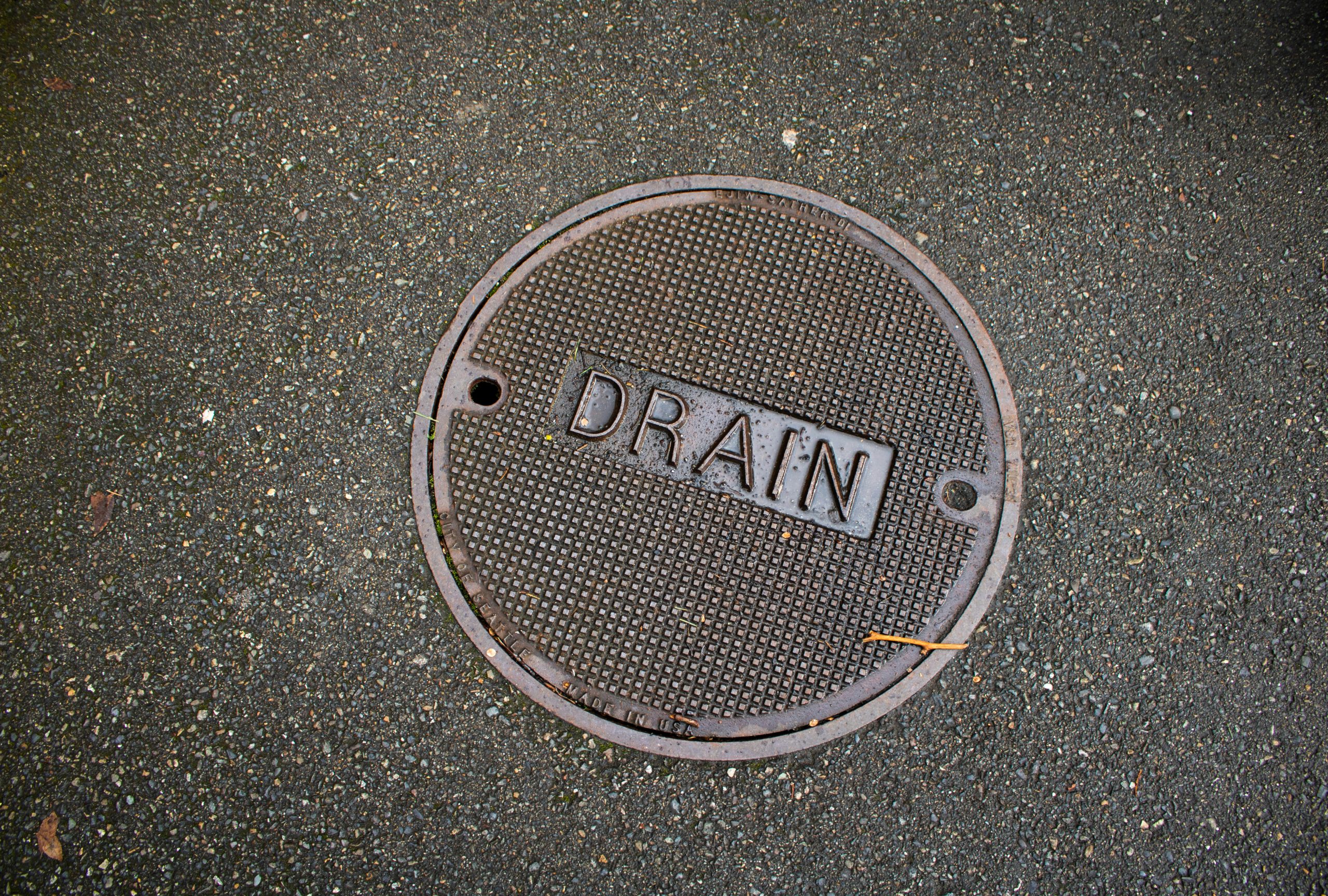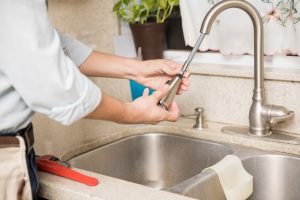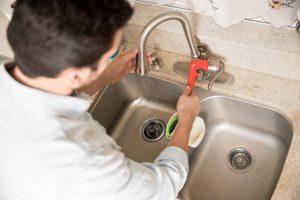Nothing can ruin your day faster than noticing dirty water pooling outside your home, a strange smell near your drain, or slow-flowing sinks and toilets. A blocked outside drain pipe is a common household problem in the UK, especially during rainy seasons, autumn leaf fall, or after years of grease and waste buildup.
But the good news? You don’t need to panic or call a plumber right away. With the right knowledge, tools, and a bit of patience, you can often unblock an outside drain yourself safely and prevent it from happening again.
This detailed guide (prepared with insights from plumbing professionals at EPG247) will walk you through:
- Why outside drains get blocked
- How to identify the signs early
- Step-by-ste unblocking methods
- When to get professional help
- And how to prevent future blockages
Let’s dive in and get your drains flowing freely again.
Why Outside Drain Pipes Get Blocked
Your home’s drainage system carries wastewater away from sinks, showers, toilets, and appliances into underground pipes that lead to the main sewer.
Over time, various factors can cause those pipes to clog up. Understanding why the blockage occurs helps you fix the problem properly, not just temporarily.
Here are the most common causes
1. Fat, Oil, and Grease (FOG) Build-up
When you pour hot cooking fat or oil down the kitchen sink, it might look harmless. But once it cools inside your outdoor pipes, it solidifies into thick, sticky layers that trap other debris, forming what’s known as a fatberg.
Over time, fatbergs can grow large enough to completely block the pipe.
2. Leaves, Twigs, and Garden Waste
During autumn or stormy weather, leaves and dirt often wash into the outside drain grates.
If you don’t clear them regularly, they can form a compact layer that stops water from flowing freely.
3. Hair and Soap Residue
Hair from showers and soap scum from sinks can travel through internal pipes and accumulate near the outdoor junction, combining with other debris.
4. Collapsed or Damaged Pipes
Sometimes, the issue isn’t dirt, it’s damage.
Old clay or metal pipes can crack or collapse due to ground movement, tree roots, or heavy vehicles above ground.
A collapsed section won’t let water flow and may need professional repair.
5. Tree Root Infiltration
Roots from nearby trees naturally seek moisture. Small cracks in your underground pipes invite them in. Once inside, roots expand rapidly, blocking the pipe almost like a net.
6. Foreign Objects
Wet wipes, sanitary items, or even children’s toys flushed down the toilet can travel farther than expected ending up lodged in your outside drain.

How to Tell If Your Outside Drain Is Blocked
Early detection can save you time, money, and a big mess later.
Here are the clear signs your outside drain pipe might be blocked:
- Water draining slowly from sinks, baths, or showers
- Bad smells coming from the drain cover or kitchen sink
- Gurgling noises when flushing or draining water
- Water pooling around the drain grate outside
- Toilets flushing slowly or water rising unusually high before draining
If you notice two or more of these signs, it’s time to investigate further.
Step-by-Step: How to Unblock a Blocked Outside Drain Pipe
Before you start, wear waterproof gloves, goggles, and old clothes. Dealing with outdoor drains can get messy.
Here’s the safe, DIY-friendly method most professionals recommend
Step 1: Identify the Blockage Area
Locate your external drain cover usually found near your kitchen or bathroom outlet.
Lift it carefully using a flathead screwdriver or drain key.
Look inside using a flashlight:
- If the chamber is full of dirty water, the blockage is downstream.
- If it’s mostly clear, it’s upstream (closer to your house).
This helps you decide where to focus your efforts.
Step 2: Remove Surface Debris
Use a garden trowel or gloved hand to remove leaves, mud, and visible debris from the top of the drain.
Place them in a bucket or plastic bag, don’t flush them back down.
Step 3: Flush With a Garden Hose
A strong jet of water can sometimes dislodge soft blockages.
Insert your hose into the pipe opening and run it at high pressure for several minutes.
If the water level drops, congratulations, the blockage may already be clearing.
Step 4: Use a Drain Rod (or Drain Snake)
If water still isn’t draining properly, you’ll need to use a drain rod, a long, flexible rod (usually in sections) with a plunger or corkscrew head.
- Push the rod gently into the drain until you feel resistance.
- Rotate clockwise to break up the blockage.
- Keep adding sections if needed.
- Pull out occasionally to check for debris and rinse clean.
Repeat until water starts flowing freely again.
Step 5: Flush Again
Once the blockage clears, run your garden hose again for 5–10 minutes to wash away any remaining debris.
You should see a smooth flow of water through the pipe.
Step 6: Clean and Disinfect
After the job’s done, clean the drain area with a mix of bleach or outdoor disinfectant to eliminate bacteria and odours.
Wash your gloves and tools thoroughly before storing them away.
Important Safety Tip
Never use chemical drain cleaners for outdoor drains. They can corrode pipes, kill garden plants, and harm wildlife.
Mechanical cleaning and water pressure are far safer and more effective methods.
Common Causes vs Fix Summary
Cause | DIY Fix Possible? | Professional Help Needed? |
Fat, oil, or grease build-up | Yes, flush and rod | Only if reoccurs |
Leaves or garden debris | Yes, remove manually | Rarely needed |
Tree root intrusion | No | Yes, CCTV inspection required |
Collapsed pipe | No | Yes, excavation or lining |
Foreign object blockage | Possibly | If inaccessible |
Hair or soap residue | Yes, flush and clean | Not usually |
Avoiding Future Drain Blockages
Fixing a blocked drain is good, but preventing it from happening again is even better.
Most outdoor drain issues are easily avoidable with regular maintenance and a few smart habits.
Here’s what to do
1. Install Drain Guards
Metal or plastic drain guards stop leaves, twigs, and debris from entering your outside drain.
They’re inexpensive and easy to clean weekly.
2. Dispose of Grease Properly
Never pour cooking oil, fat, or food scraps down your kitchen sink.
Instead, collect them in a container and throw them in the bin once cooled.
3. Rinse With Hot Water Weekly
Running hot water for a few minutes helps dissolve grease and soap residue before it hardens.
4. Trim Nearby Trees
Keep tree roots and falling leaves away from the drain area.
If you have large trees, consider a yearly inspection.
5. Check Drain Covers After Heavy Rain
Stormwater can push dirt and leaves into your system.
After every major rainfall, lift the cover and clear any visible build-up.
6. Schedule an Annual Drain Clean
Even if your drain seems fine, a professional jet wash once a year can prevent long-term buildup, saving costly repairs later.

FAQs
How do I know if the blockage is my responsibility or the water company’s?
If the blockage is within your property boundary (your outside drain or private pipes), it’s your responsibility.
If it’s beyond your boundary or affects neighbours, contact your local water company, they handle shared sewers.
Can I use bleach to clear a drain?
Bleach can help clean and disinfect, but it won’t remove physical blockages like fat or leaves. Always clear debris manually first.
Is it safe to use pressure washers?
Yes, as long as you control the pressure and keep the nozzle stable. Too much force can damage old pipes.
What if the blockage keeps coming back?
Recurring blockages often mean deeper issues, such as pipe misalignment or tree root invasion. In that case, professional inspection is best.
How often should I clean outside drains?
Ideally, once every three months. Increase to monthly during autumn or after storms.
What should I do if the water overflows into my garden?
Turn off nearby taps, stop using sinks/toilets temporarily, and clear the top debris immediately.
If it persists, it may need jetting or repair.
Are blocked drains dangerous to health?
Yes. Stagnant water breeds bacteria and can attract pests. Always clean and disinfect after unblocking.
Can I use baking soda and vinegar to unblock a drain?
That method can help with mild soap buildup inside kitchen pipes, but not for outdoor blockages. Outside drains need physical removal methods. That method can help with mild soap buildup inside kitchen pipes, but not for outdoor blockages. Outside drains need physical removal methods.
When to Call a Professional
While many outdoor blockages can be fixed at home, sometimes you’ll need expert help especially if:
- The blockage is deep underground
- You suspect a collapsed pipe or tree root damage
- Water keeps backing up after cleaning
- There’s a foul smell that won’t go away
A professional plumber uses CCTV drain cameras, jetting machines, and repair liners to locate and fix the issue permanently.
If you ever reach that stage, don’t delay, untreated blockages can lead to structural damage, flooding, or even health risks.
Professionals like those from EPG247 have the expertise and tools to handle such complex cases safely.
Conclusion
A blocked outside drain pipe might seem overwhelming, but with the right knowledge, it’s usually manageable.
By understanding what causes the problem, taking preventive steps, and knowing when to call an expert, you can keep your home safe, hygienic, and stress-free.
Regular checks, smart cleaning habits, and proper waste disposal can make a huge difference.
Remember, prevention is always easier (and cheaper) than cure.
So the next time your outside drain starts acting up, take action early, and you’ll save yourself a lot of mess, money, and frustration.









